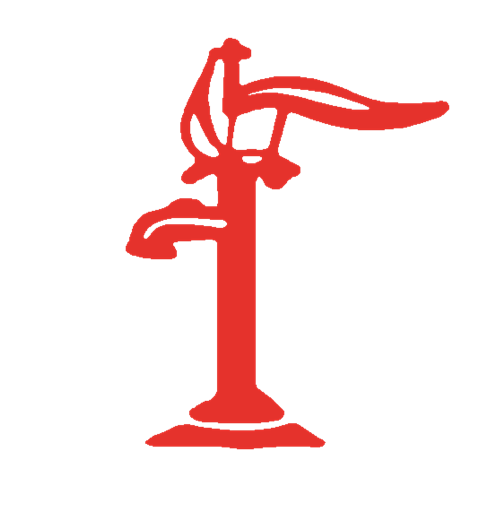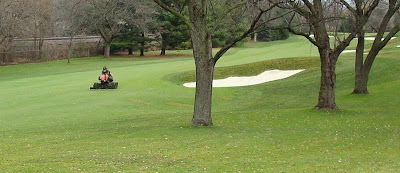 Another step in winterizing the course is closing the Halfway House. There are heaters inside the building, but as a precaution the water lines are drained and the water is removed from the lines using pressurized air in the same manner the irrigation system was winterized.
Another step in winterizing the course is closing the Halfway House. There are heaters inside the building, but as a precaution the water lines are drained and the water is removed from the lines using pressurized air in the same manner the irrigation system was winterized.The first step is the close the valve on the main water line to the Halfway House. This valve is located where the old maintenance building sat at the end of the driving range. Then an air compressor is connected to the incoming water line in the Halfway House and water is forced back through the line to a drain near the 14th green. This is done to remove the water from the line going to the Halfway House. Once this is done, the air is redirected to the fixtures in the building. Each fixture is turned on until air begins to blow out.
When air has filled the lines, RV anti-freeze is pumped into the lines, and poured into the toilets, sink drains and floor drains.
The coolers at the Halfway House are emptied and shut off. The heaters are then turned on and set for the winter.


















